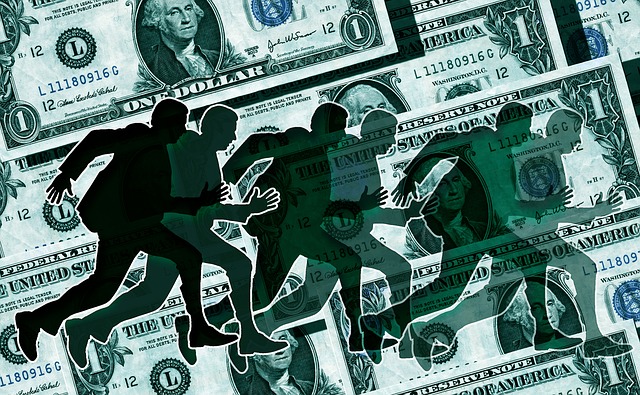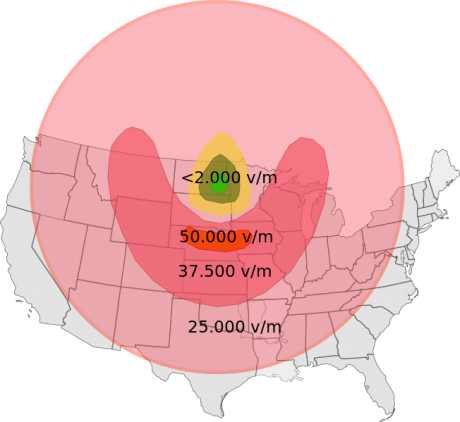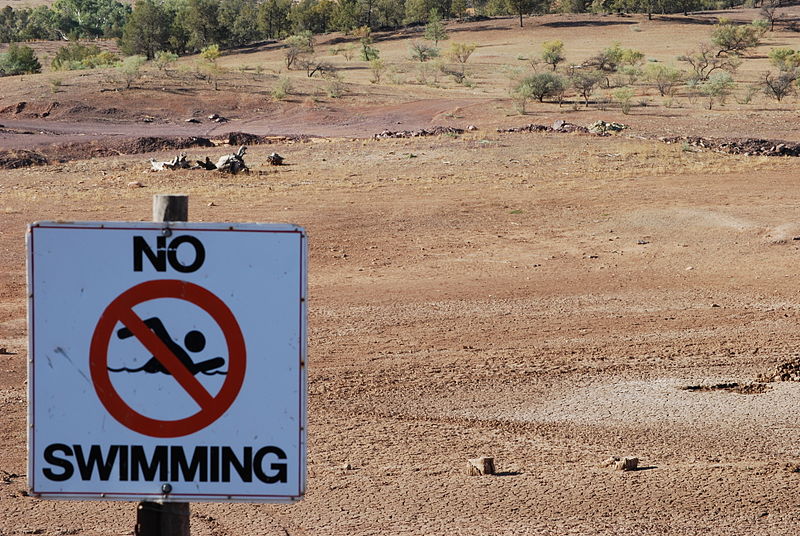 ISIS camps have now been discovered directly across the U.S. border with Mexico, ISIS operatives have been captured illegally entering the United States, and ISIS is threatening to conduct a massive campaign of terror against U.S. targets, and yet Barack Obama and his underlings continue to insist that “right-wing extremists” are the greatest terror threat that this nation is facing. One recent survey found that 84 percent of all Americans believe that ISIS is a “direct threat to the USA”, but Obama refuses to secure our borders and he is even allowing dozens of American citizens that fought for ISIS overseas to come back into this country. What in the world is Obama thinking? Even though ISIS has promised to drown all of us in our own blood, the Obama administration has purged virtually all references to Islam out of government terror training materials. Meanwhile, as you will see below, Obama’s political enemies have been regularly labeled as “potential terrorists” in official government documents during the Obama era. This includes “patriots”, “conspiracy theorists”, “evangelical Christians” and “general right-wing extremists”. (Read More...)
ISIS camps have now been discovered directly across the U.S. border with Mexico, ISIS operatives have been captured illegally entering the United States, and ISIS is threatening to conduct a massive campaign of terror against U.S. targets, and yet Barack Obama and his underlings continue to insist that “right-wing extremists” are the greatest terror threat that this nation is facing. One recent survey found that 84 percent of all Americans believe that ISIS is a “direct threat to the USA”, but Obama refuses to secure our borders and he is even allowing dozens of American citizens that fought for ISIS overseas to come back into this country. What in the world is Obama thinking? Even though ISIS has promised to drown all of us in our own blood, the Obama administration has purged virtually all references to Islam out of government terror training materials. Meanwhile, as you will see below, Obama’s political enemies have been regularly labeled as “potential terrorists” in official government documents during the Obama era. This includes “patriots”, “conspiracy theorists”, “evangelical Christians” and “general right-wing extremists”. (Read More...)
The Six Too Big To Fail Banks In The U.S. Have 278 TRILLION Dollars Of Exposure To Derivatives
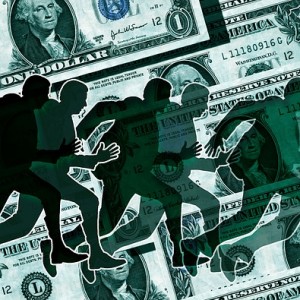 The very same people that caused the last economic crisis have created a 278 TRILLION dollar derivatives time bomb that could go off at any moment. When this absolutely colossal bubble does implode, we are going to be faced with the worst economic crash in the history of the United States. During the last financial crisis, our politicians promised us that they would make sure that “too big to fail” would never be a problem again. Instead, as you will see below, those banks have actually gotten far larger since then. So now we really can’t afford for them to fail. The six banks that I am talking about are JPMorgan Chase, Citibank, Goldman Sachs, Bank of America, Morgan Stanley and Wells Fargo. When you add up all of their exposure to derivatives, it comes to a grand total of more than 278 trillion dollars. But when you add up all of the assets of all six banks combined, it only comes to a grand total of about 9.8 trillion dollars. In other words, these “too big to fail” banks have exposure to derivatives that is more than 28 times greater than their total assets. This is complete and utter insanity, and yet nobody seems too alarmed about it. For the moment, those banks are still making lots of money and funding the campaigns of our most prominent politicians. Right now there is no incentive for them to stop their incredibly reckless gambling so they are just going to keep on doing it. (Read More...)
The very same people that caused the last economic crisis have created a 278 TRILLION dollar derivatives time bomb that could go off at any moment. When this absolutely colossal bubble does implode, we are going to be faced with the worst economic crash in the history of the United States. During the last financial crisis, our politicians promised us that they would make sure that “too big to fail” would never be a problem again. Instead, as you will see below, those banks have actually gotten far larger since then. So now we really can’t afford for them to fail. The six banks that I am talking about are JPMorgan Chase, Citibank, Goldman Sachs, Bank of America, Morgan Stanley and Wells Fargo. When you add up all of their exposure to derivatives, it comes to a grand total of more than 278 trillion dollars. But when you add up all of the assets of all six banks combined, it only comes to a grand total of about 9.8 trillion dollars. In other words, these “too big to fail” banks have exposure to derivatives that is more than 28 times greater than their total assets. This is complete and utter insanity, and yet nobody seems too alarmed about it. For the moment, those banks are still making lots of money and funding the campaigns of our most prominent politicians. Right now there is no incentive for them to stop their incredibly reckless gambling so they are just going to keep on doing it. (Read More...)
19 Signs That American Families Are Being Economically Destroyed
 The systematic destruction of the American way of life is happening all around us, and yet most people have no idea what is happening. Once upon a time in America, if you were responsible and hard working you could get a good paying job that could support a middle class lifestyle for an entire family even if you only had a high school education. Things weren’t perfect, but generally almost everyone in the entire country was able to take care of themselves without government assistance. We worked hard, we played hard, and our seemingly boundless prosperity was the envy of the entire planet. But over the past several decades things have completely changed. We consumed far more wealth than we produced, we shipped millions of good paying jobs overseas, we piled up the biggest mountain of debt in the history of the world, and we kept electing politicians that had absolutely no concern for the long-term future of this nation whatsoever. So now good jobs are in very short supply, we are drowning in an ocean of red ink, the middle class is rapidly shrinking and dependence on the government is at an all-time high. Even as we stand at the precipice of the next great economic crisis, we continue to make the same mistakes. In the end, all of us are going to pay a very great price for decades of incredibly foolish decisions. Of course a tremendous amount of damage has already been done. The numbers that I am about to share with you are staggering. The following are 19 signs that American families are being economically destroyed… (Read More...)
The systematic destruction of the American way of life is happening all around us, and yet most people have no idea what is happening. Once upon a time in America, if you were responsible and hard working you could get a good paying job that could support a middle class lifestyle for an entire family even if you only had a high school education. Things weren’t perfect, but generally almost everyone in the entire country was able to take care of themselves without government assistance. We worked hard, we played hard, and our seemingly boundless prosperity was the envy of the entire planet. But over the past several decades things have completely changed. We consumed far more wealth than we produced, we shipped millions of good paying jobs overseas, we piled up the biggest mountain of debt in the history of the world, and we kept electing politicians that had absolutely no concern for the long-term future of this nation whatsoever. So now good jobs are in very short supply, we are drowning in an ocean of red ink, the middle class is rapidly shrinking and dependence on the government is at an all-time high. Even as we stand at the precipice of the next great economic crisis, we continue to make the same mistakes. In the end, all of us are going to pay a very great price for decades of incredibly foolish decisions. Of course a tremendous amount of damage has already been done. The numbers that I am about to share with you are staggering. The following are 19 signs that American families are being economically destroyed… (Read More...)
Smart Meters: Enforcement Of Mandatory Water Restrictions Is Only Just The Beginning
 Smart meters are now being used by authorities to crack down on “water wasters” in the state of California, but this is just the tip of the iceberg as far as what they can be used for. Ultimately, smart meters are designed to be part of an entire “smart grid” that will enable government bureaucrats “to control everything from your dishwasher to thermostat“. And in recent years, there has been a massive push to install smart meters in as many homes in the United States and Europe as possible. Back in December 2007, there were only 7 million smart meters installed in this country. Today there are more than 51 million. On the other side of the Atlantic, the European Parliament has set a goal of having smart meters in 80 percent of all homes by the year 2020. This is being promoted as the “green” thing to do, but could it be possible that there is more to these smart meters than meets the eye? (Read More...)
Smart meters are now being used by authorities to crack down on “water wasters” in the state of California, but this is just the tip of the iceberg as far as what they can be used for. Ultimately, smart meters are designed to be part of an entire “smart grid” that will enable government bureaucrats “to control everything from your dishwasher to thermostat“. And in recent years, there has been a massive push to install smart meters in as many homes in the United States and Europe as possible. Back in December 2007, there were only 7 million smart meters installed in this country. Today there are more than 51 million. On the other side of the Atlantic, the European Parliament has set a goal of having smart meters in 80 percent of all homes by the year 2020. This is being promoted as the “green” thing to do, but could it be possible that there is more to these smart meters than meets the eye? (Read More...)
The EMP Threat: All It Would Take Is A Couple Of Explosions To Send America Back To The 1800s
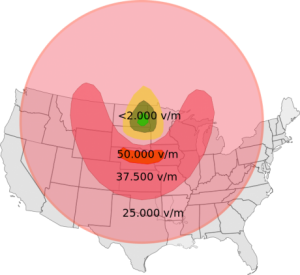 Our entire way of life can be ended in a single day. And it wouldn’t even take a nuclear war to do it. All it would take for a rogue nation or terror organization to bring us to our knees is the explosion of a couple well-placed nuclear devices high up in our atmosphere. The resulting electromagnetic pulses would fry electronics from coast to coast. Of course this could also be accomplished without any attack. Scientists tell us that massive solar storms have hit our planet before, and that it is inevitable that there will be more in the future. As you will read about below, the most recent example of this was “the Carrington Event” in 1859. If a similar burst from the sun hit us today, experts tell us that life in America could suddenly resemble life in the 1800s, and the economic damage caused could potentially be in the trillions of dollars. This is one of the greatest potential threats that we are facing as a nation, and yet Barack Obama has essentially done nothing to get us prepared. (Read More...)
Our entire way of life can be ended in a single day. And it wouldn’t even take a nuclear war to do it. All it would take for a rogue nation or terror organization to bring us to our knees is the explosion of a couple well-placed nuclear devices high up in our atmosphere. The resulting electromagnetic pulses would fry electronics from coast to coast. Of course this could also be accomplished without any attack. Scientists tell us that massive solar storms have hit our planet before, and that it is inevitable that there will be more in the future. As you will read about below, the most recent example of this was “the Carrington Event” in 1859. If a similar burst from the sun hit us today, experts tell us that life in America could suddenly resemble life in the 1800s, and the economic damage caused could potentially be in the trillions of dollars. This is one of the greatest potential threats that we are facing as a nation, and yet Barack Obama has essentially done nothing to get us prepared. (Read More...)
How Many People Will Have To Migrate Out Of California When All The Water Disappears?
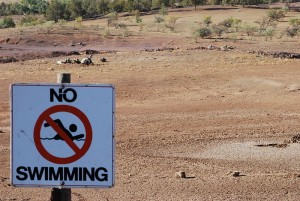 The drought in California is getting a lot worse. As you read this, snowpack levels in the Sierra Nevada mountains are the lowest that have ever been recorded. That means that there won’t be much water for California farmers and California cities once again this year. To make up the difference in recent years, water has been pumped out of the ground like crazy. In fact, California has been losing more than 12 million acre-feet of groundwater a year since 2011, and wells all over the state are going dry. Once the groundwater is all gone, what are people going to do? 100 years ago, the population of the state of California was 3 million, and during the 20th century we built lots of beautiful new cities in an area that was previously a desert. Scientists tell us that the 20th century was the wettest century in 1000 years for that area of the country, but now weather patterns are reverting back to normal. Today, the state of California is turning back into a desert but it now has a population of 38 million people. This is not sustainable in the long-term. So when the water runs out, where are they going to go? (Read More...)
The drought in California is getting a lot worse. As you read this, snowpack levels in the Sierra Nevada mountains are the lowest that have ever been recorded. That means that there won’t be much water for California farmers and California cities once again this year. To make up the difference in recent years, water has been pumped out of the ground like crazy. In fact, California has been losing more than 12 million acre-feet of groundwater a year since 2011, and wells all over the state are going dry. Once the groundwater is all gone, what are people going to do? 100 years ago, the population of the state of California was 3 million, and during the 20th century we built lots of beautiful new cities in an area that was previously a desert. Scientists tell us that the 20th century was the wettest century in 1000 years for that area of the country, but now weather patterns are reverting back to normal. Today, the state of California is turning back into a desert but it now has a population of 38 million people. This is not sustainable in the long-term. So when the water runs out, where are they going to go? (Read More...)
If Anyone Doubts That We Are In A Stock Market Bubble, Show Them This Article
 The higher financial markets rise, the harder they fall. By any objective measurement, the stock market is currently well into bubble territory. Anyone should be able to see this – all you have to do is look at the charts. Sadly, most of us never seem to learn from history. Most of us want to believe that somehow “things are different this time”. Well, about the only thing that is different this time is that our economy is in far worse shape than it was just prior to the last major financial crisis. That means that we are more vulnerable and will almost certainly endure even more damage this time around. It would be one thing if stocks were soaring because the U.S. economy as a whole was doing extremely well. But we all know that isn’t true. Instead, what we have been experiencing is clearly artificial market behavior that has nothing to do with economic reality. In other words, we are dealing with an irrational financial bubble, and all irrational financial bubbles eventually burst. And as I wrote about yesterday, the way that stocks have moved so far this year is eerily reminiscent of the way that stocks moved in early 2008. The warning signs are there – if you are willing to look at them. (Read More...)
The higher financial markets rise, the harder they fall. By any objective measurement, the stock market is currently well into bubble territory. Anyone should be able to see this – all you have to do is look at the charts. Sadly, most of us never seem to learn from history. Most of us want to believe that somehow “things are different this time”. Well, about the only thing that is different this time is that our economy is in far worse shape than it was just prior to the last major financial crisis. That means that we are more vulnerable and will almost certainly endure even more damage this time around. It would be one thing if stocks were soaring because the U.S. economy as a whole was doing extremely well. But we all know that isn’t true. Instead, what we have been experiencing is clearly artificial market behavior that has nothing to do with economic reality. In other words, we are dealing with an irrational financial bubble, and all irrational financial bubbles eventually burst. And as I wrote about yesterday, the way that stocks have moved so far this year is eerily reminiscent of the way that stocks moved in early 2008. The warning signs are there – if you are willing to look at them. (Read More...)
The Stock Market In 2015 Is Starting To Look Remarkably Similar To The Stock Market In 2008
 Are we watching a replay of the last financial crisis? Over the past six months, the price of oil has collapsed, the U.S. dollar has soared, and a whole bunch of other patterns that we witnessed just before the stock market crash of 2008 are repeating once again. But what we have not seen yet is the actual stock market crash. So will there be one this year? In this article, I am going to compare the performance of the Dow Jones Industrial Average during the first three months of 2008 to the performance of the Dow Jones Industrial Average during the first three months of 2015. As you will see, there are some striking similarities. And without a doubt, we are overdue for a major market downturn. The S&P 500 has risen for six years in a row, but it has never had seven up years consecutively. In addition, there has not even been a 10 percent stock market “correction” is almost three and a half years. So will stocks be able to continue to defy both gravity and the forces of economic reality? Only time will tell. (Read More...)
Are we watching a replay of the last financial crisis? Over the past six months, the price of oil has collapsed, the U.S. dollar has soared, and a whole bunch of other patterns that we witnessed just before the stock market crash of 2008 are repeating once again. But what we have not seen yet is the actual stock market crash. So will there be one this year? In this article, I am going to compare the performance of the Dow Jones Industrial Average during the first three months of 2008 to the performance of the Dow Jones Industrial Average during the first three months of 2015. As you will see, there are some striking similarities. And without a doubt, we are overdue for a major market downturn. The S&P 500 has risen for six years in a row, but it has never had seven up years consecutively. In addition, there has not even been a 10 percent stock market “correction” is almost three and a half years. So will stocks be able to continue to defy both gravity and the forces of economic reality? Only time will tell. (Read More...)

